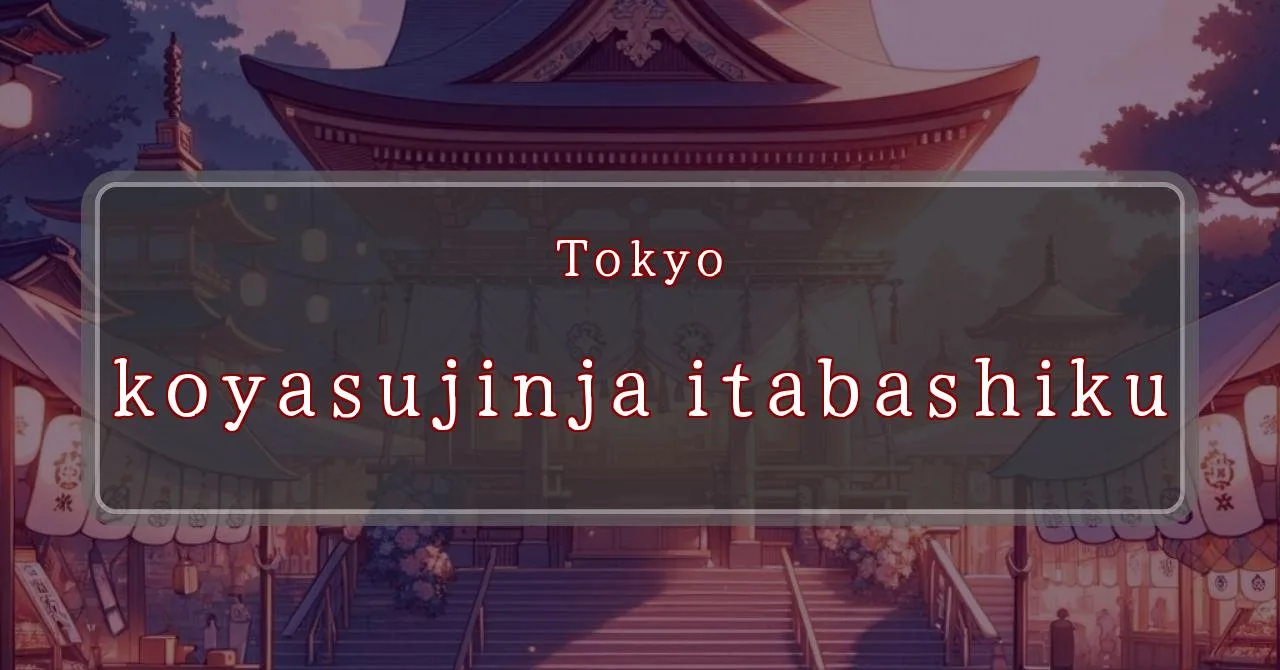Enchanting shrine festival with lively parades and sacred rituals
Basic Information
Koisumi Shrine is a Shinto shrine located in Itabashi Ward, Tokyo, Japan. It is dedicated to the goddess Konohanasakuya-hime, the goddess of Mount Fuji.
- Address: 2-19-20 Itabashi, Itabashi-ku, Tokyo 173-0004
- Phone Number: 03-3963-0383
- Access: 5-minute walk from Shimo-Itabashi Station or Oyama Station on the Tobu Tojo Line, or 5-minute walk from Itabashi-kuyakushomae Station on the Toei Mita Line
- Festival Days: Third Saturday and Sunday of September
Main Events and Attractions of the Festival
The Koisumi Shrine Festival is a lively and colorful event that attracts many visitors each year. The main events and attractions of the festival include:
Mikoshi and Yamaboko Procession
One of the highlights of the festival is the mikoshi (portable shrine) and yamaboko (floats) procession. On the first day of the festival, children carry small mikoshi and yamaboko through the streets of the neighborhood. On the second day, adults carry larger mikoshi and yamaboko, and the procession is accompanied by music and dancing.
Kagura Performance
Kagura is a traditional Japanese dance and music performance that is often performed at Shinto shrines. During the Koisumi Shrine Festival, kagura is performed by local children and adults. The performances are a beautiful and moving way to experience Japanese culture.
Food and Games
The festival also features a variety of food and games. Visitors can enjoy traditional Japanese festival foods such as yakisoba (fried noodles), takoyaki (octopus balls), and kakigori (shaved ice). There are also games and activities for children of all ages.
Fireworks Display
The festival concludes with a spectacular fireworks display on the evening of the second day. The fireworks light up the night sky and create a magical atmosphere.
Blessings and Deities
Koisumi Shrine is dedicated to the goddess Konohanasakuya-hime, the goddess of Mount Fuji. She is also known as the goddess of safe childbirth, child-rearing, and marital harmony. Visitors to the shrine often pray for blessings in these areas.
- Konohanasakuya-hime: Goddess of Mount Fuji, safe childbirth, child-rearing, and marital harmony
Origin and History
The exact date of Koisumi Shrine’s establishment is unknown, but it is believed to have been founded during the Edo period (1603-1868). The shrine was originally located in a different part of Itabashi Ward, but it was moved to its current location in 1935.
- Edo period (1603-1868): Founding of the shrine
- 1935: Relocation to current location
Tips and Notes for Visitors
Here are some tips and notes for visitors to the Koisumi Shrine Festival:
- The festival is held on the third Saturday and Sunday of September each year.
- The festival is very popular, so it is advisable to arrive early to avoid crowds.
- There are a variety of food and games available at the festival.
- The fireworks display is held on the evening of the second day of the festival.
Parking Information
There is no parking lot at Koisumi Shrine. However, there are several coin-operated parking lots in the surrounding area.
- No parking lot at Koisumi Shrine
- Coin-operated parking lots available in the surrounding area
Popular Stalls and Food Carts in Recent Years
| Type of Stall | Description |
|---|---|
| Takoyaki | A staple at Japanese festivals. Characterized by a crispy outside and a creamy inside. |
| Jaga Butter | A simple yet popular snack of hot potatoes lavishly topped with melted butter. |
| Baby Castella | Small castella cakes, sweet and fluffy treats enjoyed by children and adults alike. |
| Grilled Ayu with Salt | Fresh ayu fish grilled whole with salt, a savory taste of Japanese summer. |
| Shaapin | A unique gourmet item influenced by foreign cuisine, with a chewy skin wrapping the filling. |
| Okonomiyaki | A Japanese grilled dish where you often choose your own ingredients for a personalized flavor. |
| Cotton Candy | A fluffy, sweet snack that’s extremely popular with children. |
| Chocolate Banana | A banana coated in chocolate, a fun and visually appealing dessert. |
| Kushiyaki | Various types of ingredients skewered and grilled, an easy-to-enjoy snack. |
| Yakisoba | Fried noodles mixed with a special sauce, a fast food favorite in Japan. |



